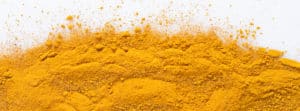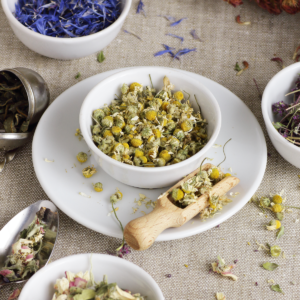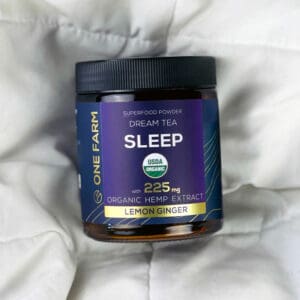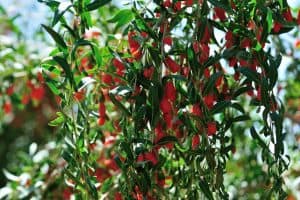The many Benefits and Uses of Turmeric
Our pursuit of wellbeing is gradually bringing us all the way back to the very basics – to the humble and somewhat gnarled, root-like rhizomes of turmeric. Turmeric — and especially its most active compound, curcumin — have many scientifically proven health benefits & uses. This guide breaks down all things Turmeric, & showcases the superfood as an indomitable position spanning the separate worlds of health, wellness, food, drink and medicine – and millennia.
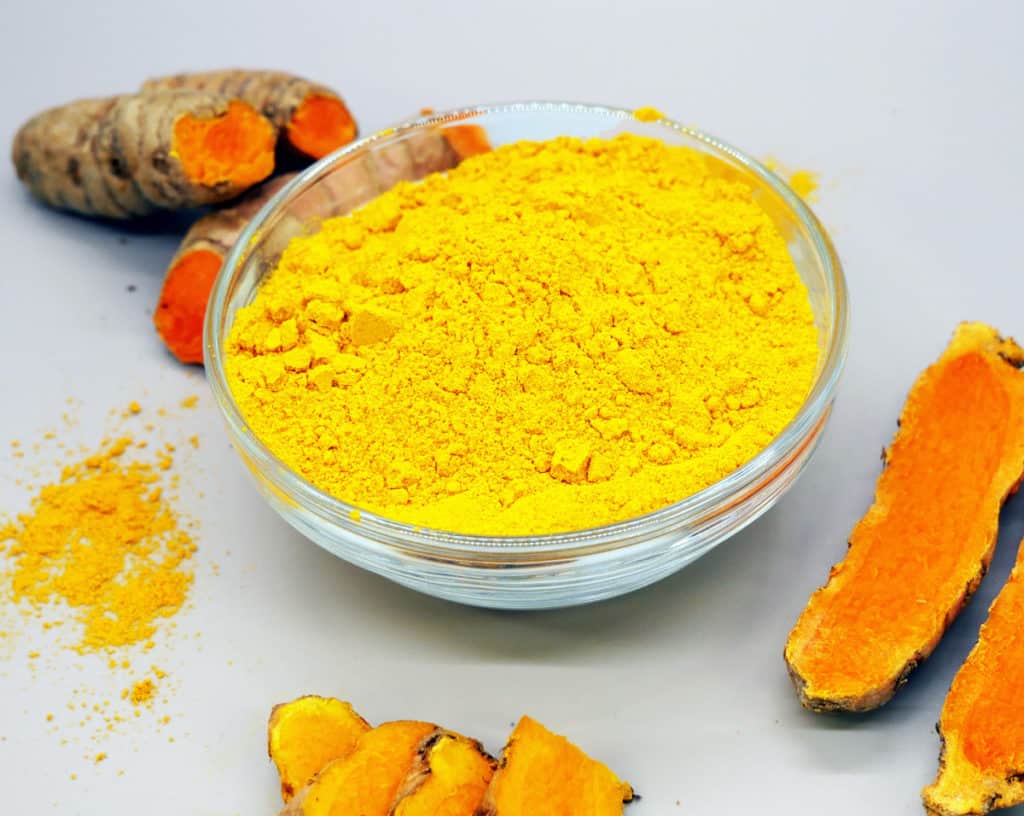
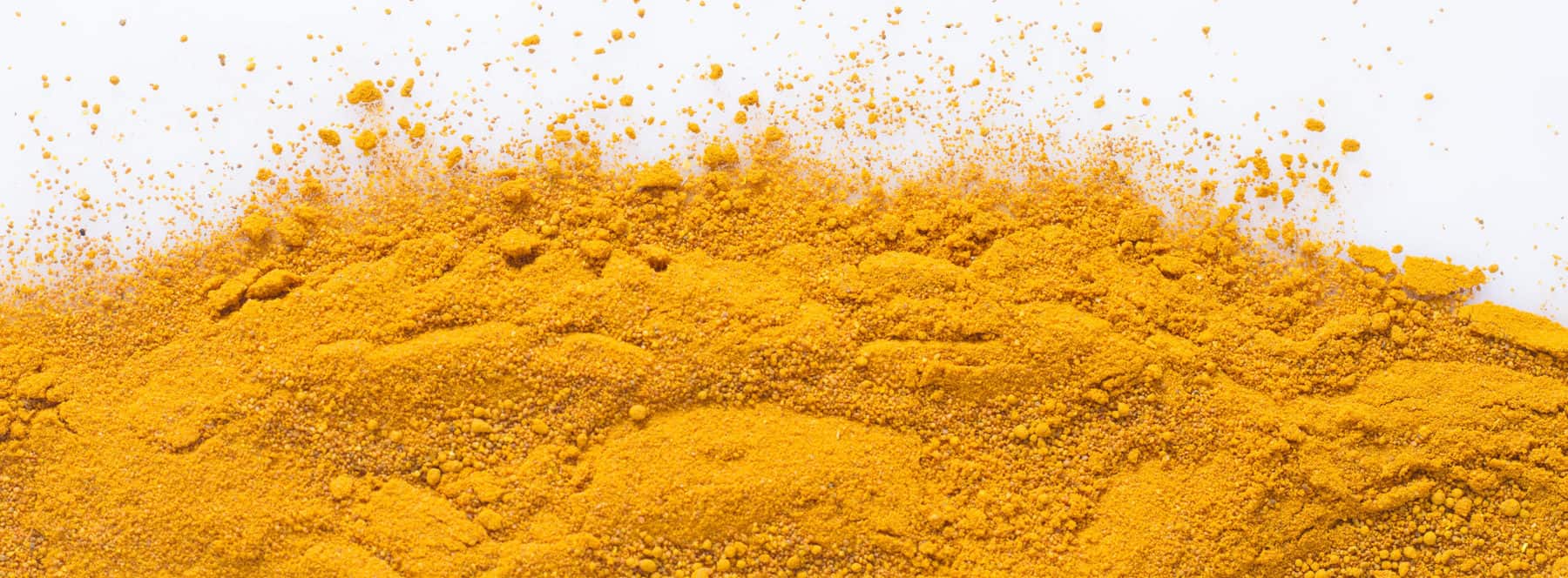
Health and Wellness Benefits and Uses of Turmeric (Curcumin)
In any cupboard, masala dabba, or spice market, there are few ingredients as distinctive – whether in smell, taste, or appearance – as turmeric. Its deep, golden hue is a familiar and comforting sight for so many of us – just as the rich smells of earth and pepper, and a light spice rising in steam have the power to lull us into the quiet, contemplative mood of home.
It is a mood that spans thousands of miles, and hundreds of years. Turmeric has, after all, taken a central role in the daily lives of countless individuals – from the ancient healers who founded Eastern medicine, to the home cooks stopped over aromatic boiling pots. Featuring a delicate and symmetrical flower and a heavy green stem, it is turmeric’s rhizomes which, when ground to a fine, orange powder, have come to be emblematic of this fascinating plant.
For many decades, turmeric’s role in Western life was largely limited to the culinary world. Its nickname as the ‘poor man’s saffron’ (owing to its warm hue) meant that it held a restricted significance for many of us, and was most commonly used as a natural means of adding colour to foods, or in spice mixes for homemade curries.
Still, in recent years, an incredibly varied, long, and still-growing list of potential health benefits has begun to gain traction in the west – particularly within the flourishing world of health and wellness – thus catapulting this once-underappreciated pantry ingredient to the very forefront of personal and scientific research.
The result is, in many ways, phenomenal. Turmeric’s resurgence has created innumerable new avenues to explore – potentially pivotal lines of enquiry which promise much for the future of science and medicine, as well as individuals who, for various reasons, have decided to take more control over their physical and emotional wellbeing.
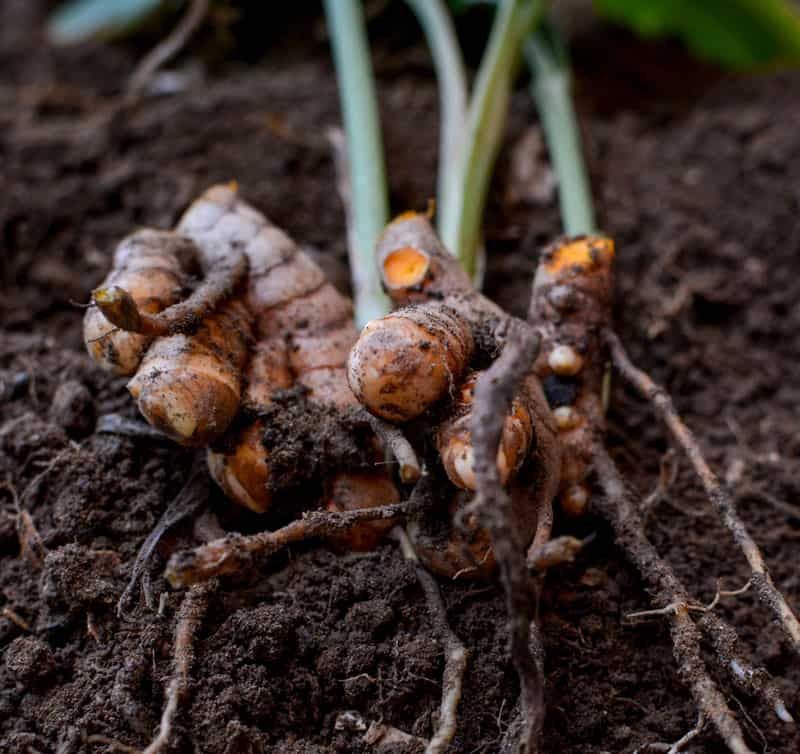
The History:
Where is it’s origin?
Turmeric, or curcuma longa, is native to India and Southeast Asia, where it has thrived for millennia in the generous heat and rainfall that bears down on the regions’ forests. It was there, we can presume, that its fleshy, root-like rhizomes were first discovered growing wild, and harvested straight from the ground.
It is thought that the first discovered use for this plant was dyeing textiles. While, these days, other substances have proven far more effective at creating a strong, rich and durable yellow hue, it would have appeared all the more vibrant to those who first pioneered its use thousands of years ago. In fact, evidence of turmeric’s utilisation stems back to around 2600 BCE, and the distinctive colour it produces has been found on clothing worn by communities as far flung as Tahiti, India, Taiwan, Hawaii, Polynesia and Micronesia.
Fascinatingly, this means that turmeric’s early adoption spans areas of the globe between which archaeologists have concluded no trade, or even human-to-human contact, ever took place. What this means it that the rhizome’s integration within daily life was organic, and occurred many times over around the world, seemingly in tangent.
While it is thought that turmeric was first utilised as a dye, it can’t have been long before it was integrated into many dishes that were, and remain, staples of communities across Southeast Asia.
Similarly, relatively soon after its discovery, turmeric began to take on a centrality within many branches of traditional medicine, some of which (such as traditional Chinese medicine and Ayurveda) continue to hold significance for many people to this day, and others that are still considered to represent the foundations of modern, academic study.
It was, of course, also enjoyed in daily life – and not just in curries and other savoury dishes. For instance, Haldi Doodh – a drink that combines milk, warming spices like ginger and cardamom, and turmeric (the reason behind its nickname, golden milk) traces its roots to Ayurveda. This traditional, comforting drink is the direct inspiration behind our Golden Mylk Latte.

Curcumin and Anti-Inflammation
If you have only heard a little about turmeric’s potential health benefits, then you have likely heard primarily about its potential applications as an anti-inflammatory – particularly in chronic, relatively mild level of inflammation, which can pose the biggest risk to our health and wellbeing in the long run.
Low-level inflammation has myriad potential causes, from the physiological (such as persistent injury, prolonged exposure to allergens and irritants, autoimmune conditions) to chronic stress, which can be severe enough to shield itself from a perceived threat as cortisol levels remain elevated for prolonged periods of time.
We are not always aware that we have this type of inflammation (as distinct from acute, or short-lived, inflammation). Symptoms can include fatigue, pain throughout the body, fevers and seemingly unrelated rashes and sores. Chronic inflammation can, however, elevate sufferers’ risks of developing a wide range of health complications, ranging from heart disease and rheumatoid arthritis to certain types of cancer, as a result of cell mutation.
Inflammation in various parts of the body can also be caused by conditions as wide ranging as arthritis, inflammatory bowel disease (IBD), endometriosis and diabetes. While it is important to remember that inflammation serves a vital role within the body, it can have the opposite effect if it becomes persistent.
As with many of ingredients that have risen to the forefront of the health and wellness industry, academia is still working to play catch up with the tremendous wave of anecdotal evidence. For this reason, modern, scientific research remains somewhat limited – although recent years have seen a great deal more interest gathering.
Turmeric’s reputation as a powerful anti-inflammatory stems from curcumin – by far the most prolific of the bioactive compounds contained within the rhizome. Research has already demonstrated a potentially strong link between curcumin and the treatment and prevention of chronic inflammation, provided ‘bioavailability’ is optimised.
A Note on Bioavailability
Bioavailability is, put simply, a term that refers to the proportion of a substance (in this instance, curcumin) that achieves the desired, positive effect within the body, rather than simply passing through the digestive system. Every food and drug boasts a different level of bioavailability, decided by the unique ways in which they interact with the body.
Curcumin is, unfortunately, afflicted with a very low level of bioavailability. What this means is that, when ingested, this compound is limited in terms of the benefits it can bring to our bodies.
Fascinatingly, bioavailability can be augmented by combining turmeric with Piperine – an alkaloid found within black pepper. In fact, recent insights suggest that the addition of Piperine can increase the bioavailability of curcumin by 2,000%, meaning that we are able to get a lot more value from every serving or dosage of turmeric we take.
It is for this reason that our Recharge and Replenish Vitality Boost features both turmeric and black pepper. Together, their impact on the body is much stronger – and much more beneficial.
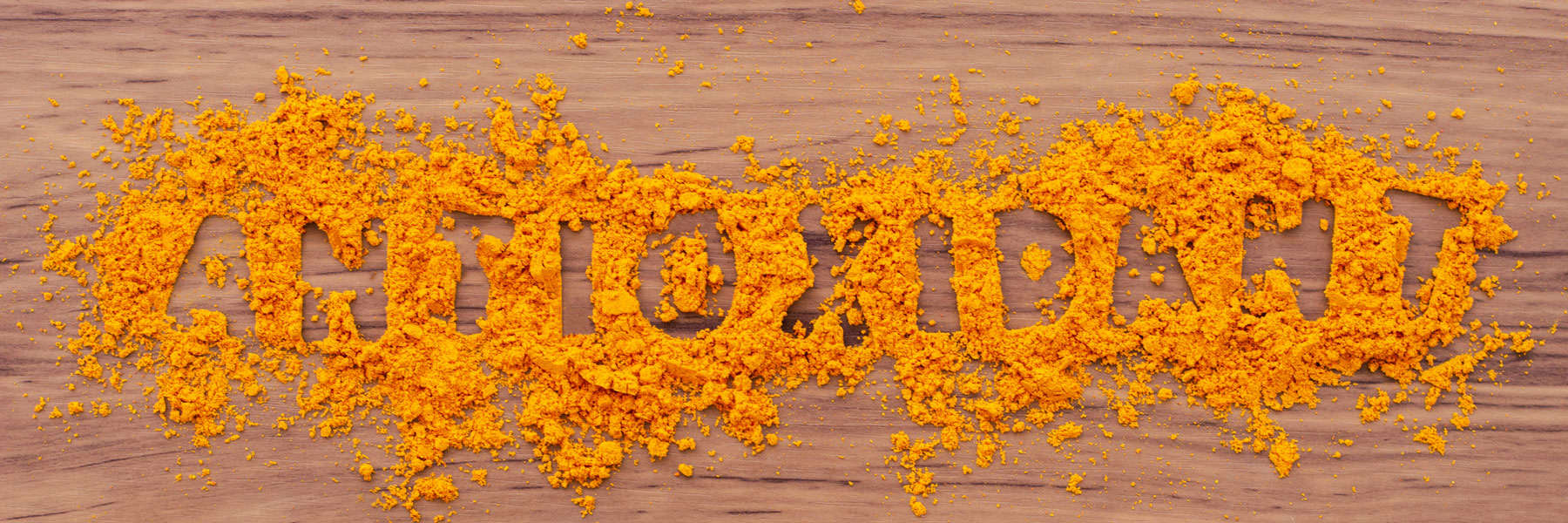
Curcumin and Antioxidation
Within the health and wellness industry, we have seen more and more attention being given to antioxidants, and the importance of combatting free radicals within the body – and for very good reason. The accumulation of free radicals, or unstable atoms produced by the body’s usual metabolic processes, has been linked to oxidative stress – a condition which manifests in cell and tissue damage, and an elevated risk of potentially significant health complications as a result.
For this reason, consuming plenty of antioxidants is incredibly important to maintaining a beneficial equilibrium within the body. Antioxidants are available in a wide range of wholefoods, such as blueberries and goji berries, pecans, artichokes, asparagus, kale and collard greens – and, of course, turmeric.
Antioxidants work by effectively ‘neutralizing’ free radicals, and bringing concentrations within the body down to a safer level. As a result, curcumin has garnered significant attention for its use as an antioxidant in medical world – again, both as a treatment and a preventative measure.
Again, when taken as a dietary supplement, bioactivity is greatly heightened by the presence of Piperine.

Curcumin and Brain Health
It is so often the case – and testament to the remarkable powers hidden within nature – that ingredients which offer significant benefits for one area within the body also pose remarkable potential for other systems and organs elsewhere in the body. Curcumin is no exception.
For starters, curcumin is fat soluble, or ‘lipophilic’ – a fact which means it is capable of crossing the brain-blood barrier, meaning that it can have a direct, positive impact on the brain itself. This phenomenon is garnering tremendous interest from researchers – particularly in the field of neurodegenerative disorders, such as Alzheimer’s Disease.
In this study, for instance, researchers found that curcumin’s ability to inhibit certain fibres from forming within the brain – fibres that play a central role in the progression of this debilitating disease.
In this arena, research remains relatively limited in scope – many more trials and reviews are needed before turmeric can be considered a pivotal new treatment and preventative aid for patients suffering from (or at risk of developing) Alzheimer’s disease.
Beyond brain health, some researchers are also investigating turmeric’s potential applications for our mental health – specifically, depression, which is thought to cause an increase in the neurotrophic factor (biomolecule) BDNF.
Researchers also consider irregular levels of BDNF to be linked to Alzheimer’s disease — although, in this instance, it is a deficiency, rather than excess – a fact which suggests that curcumin’s potentially positive impact on Alzheimer’s disease could translate into a positive impact for those suffering from depression.
Again, no body of research is yet substantial enough to be definitive, and it would be irresponsible for any company to sell turmeric-based products angled toward curing/treating depression. Still, this growing interest in academia and innovative new research suggests a number of pivotal new avenues to explore going forward – and the potential for hope on the horizon for thousands of patients in the future.
What’s more, it offers further insight into quite how valuable the turmeric rhizome is – and how its influence will continue to grow, even millennia after it first rose to prominence in daily life.

Curcumin and Heart Health
The heart needs no introduction – and, sadly, neither does the substantial risk of heart disease around the world.
As a direct result of the risk, countless hours have been poured into researching, understanding, treating and preventing heart disease, with a view to releasing its tight grip on ageing populations across the globe.
Mitigating the impact heart disease has on the global population is not something that will be managed with just one treatment or idea – it is, in all likelihood, going to be the product of thousands of minds working over the course of decades to find a way out of this tangled forest.
One line of research has, however, uncovered a potential use for turmeric in the fight against heart disease – namely, improving the function of the endothelium and, as a result, supporting general heart health.
This research is not limited to humans, either. Increasingly, researchers are uncovering the value turmeric holds for our pets. In dogs, for instance, this spice has been found to offer a potential treatment for lowering LDL cholesterol in dogs – mitigating the risk of serious blood clots forming.
The sheer scope of potential turmeric holds for dogs is why we chose to include it within our Turmeric+Mushroom Pet Treat, ensuring that they can reap the same benefits we do from the addition of turmeric to their diets.
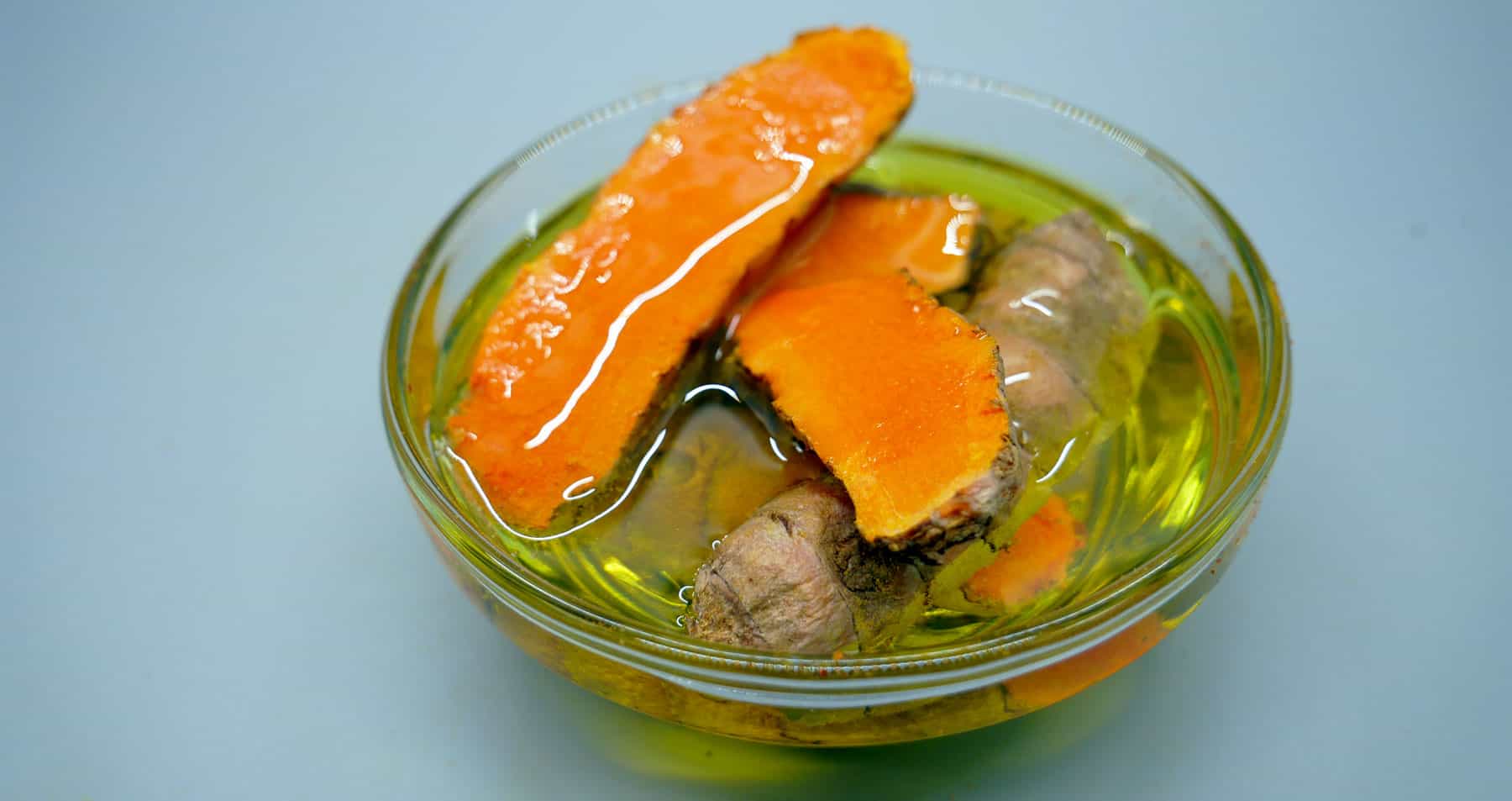
What are the Topical Properties of Turmeric?
Turmeric needn’t be consumed to produce a powerful, therapeutic effect on inflammation – particularly when its bioavailability is augmented by the presence of other natural components, such as Piperine.
A recent systematic review of studies examining turmeric’s effects on skin health found that there are myriad conditions which may well benefit from the use of turmeric as a topical, therapeutic treatment, from psoriasis and alopecia to acne and atopic dermatitis.
At One Farm, our Turmeric Relief Cream offers a topical, soothing treatment for managing the soreness brought on by inflamed joints and muscles. The use of turmeric with Piperine, and a number of other botanicals – and, of course, our USDA certified organic CBD – creates a product that, in our opinion, truly speaks to the transformative power of the humble turmeric plant.

The Source: Where does your Turmeric come from?
The scope of benefits we can derive from a regular intake of turmeric is largely dependent on the quality of the product itself. As with anything we harvest from nature, a conscious effort to utilise only those sources that prioritise the health of their environment and users – and, of course, sustainable growing practices – is the best thing we can do to ensure the best results.
As consumers, our understanding of the downsides to opting for non-organic produce is, thankfully, growing clearer with each passing year. We understand how the nutrients various crops draw from the soil can be replaced by potentially harmful, synthetic chemicals – and how this can so easily undermine even the healthiest, plant-based diets.
It is for this reason alone that we choose to source all of our turmeric from Grenera Organics, where the plant is grown and harvested under ideal conditions, within their 300 acres of farmland.
Not only does this ensure that our products feature turmeric that has been planted, cultivated and harvested according to organic practices, but it also means that the beneficial aspects of the rhizomes are all the more potent. More specifically, Grenera Organics’ turmeric powder comprises between 4-7% curcumin – a high concentration for the turmeric rhizome, which often comprises around 3% curcumin.
Under normal conditions, the turmeric plant takes the better part of a year to reach maturity. Unfortunately, the popularity of turmeric has given rise to plenty of companies who wish to expedite the growing process – to sell produce en masse, without sparing much thought for quality.
Quality continues to represent our priority, even when the benchmarks of that quality are not visible to the naked eye.
Turmeric, Past and Future
There is a great deal of reassurance to be found in those ingredients that have managed to retain such significance throughout the turbulent course of human history.
The health and wellness industry is forever moving forward – forever focused on advancement, the cutting edge of research, and toward continued personal improvement – and it is, of course, all too easy to feel overwhelmed by it. An endless pursuit, even when aimed toward actualisation, is still exhausting at times.
For this reason alone, it is comforting to consider the fact that the most indefatigable foci of the industry have been enabling human beings to thrive, relax, heal, and restore themselves both mentally and physically for thousands of years. Yes, we are in need of more research – for modern science to finally take heed of what has been extolled anecdotally since long before recorded history began – but we are, finally, on the right track.
Our pursuit of wellbeing is gradually bringing us all the way back to the very basics – to the humble and somewhat gnarled, root-like rhizomes of turmeric – the unassuming leaves of the hemp plant – the unremarkable peppercorn and the damp-dwelling mushroom. There is nothing new – only our understanding, and the ways in which we pursue it.
One Farm’s Turmeric Remedies
We’ve incoperated this Aruvedic superfood into our plant-based natural remedies because research has demonstrated a potentially strong link between curcumin and the treatment and prevention of chronic inflammation.

Turmeric Latte
formulated with powerful plant-based anti-inflammatories to help combat systemic inflammation.
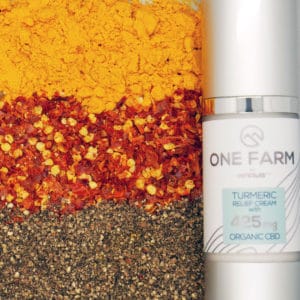
Turmeric Relief Cream
Provide targeted relief to your joints & muscles. Reduce pain & inflammation with botanical infusions of Turmeric, Piperine, Cayenne, and Organic CBD.
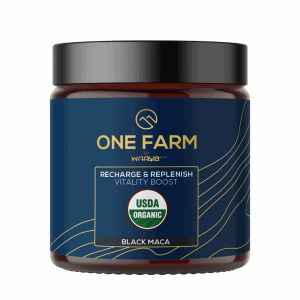
Vitality Boost
powerful blend of 14 natural energy boosters, anti-inflammatories, and antioxidants designed to help your body recover & recharge.
We are an open book. Don’t hesitate to reach out to us with any specific questions you have about incorporating our USDA Organic CBD into your daily routines. Knowledge is power, & we strive to be a continued resource in your CBD education.

